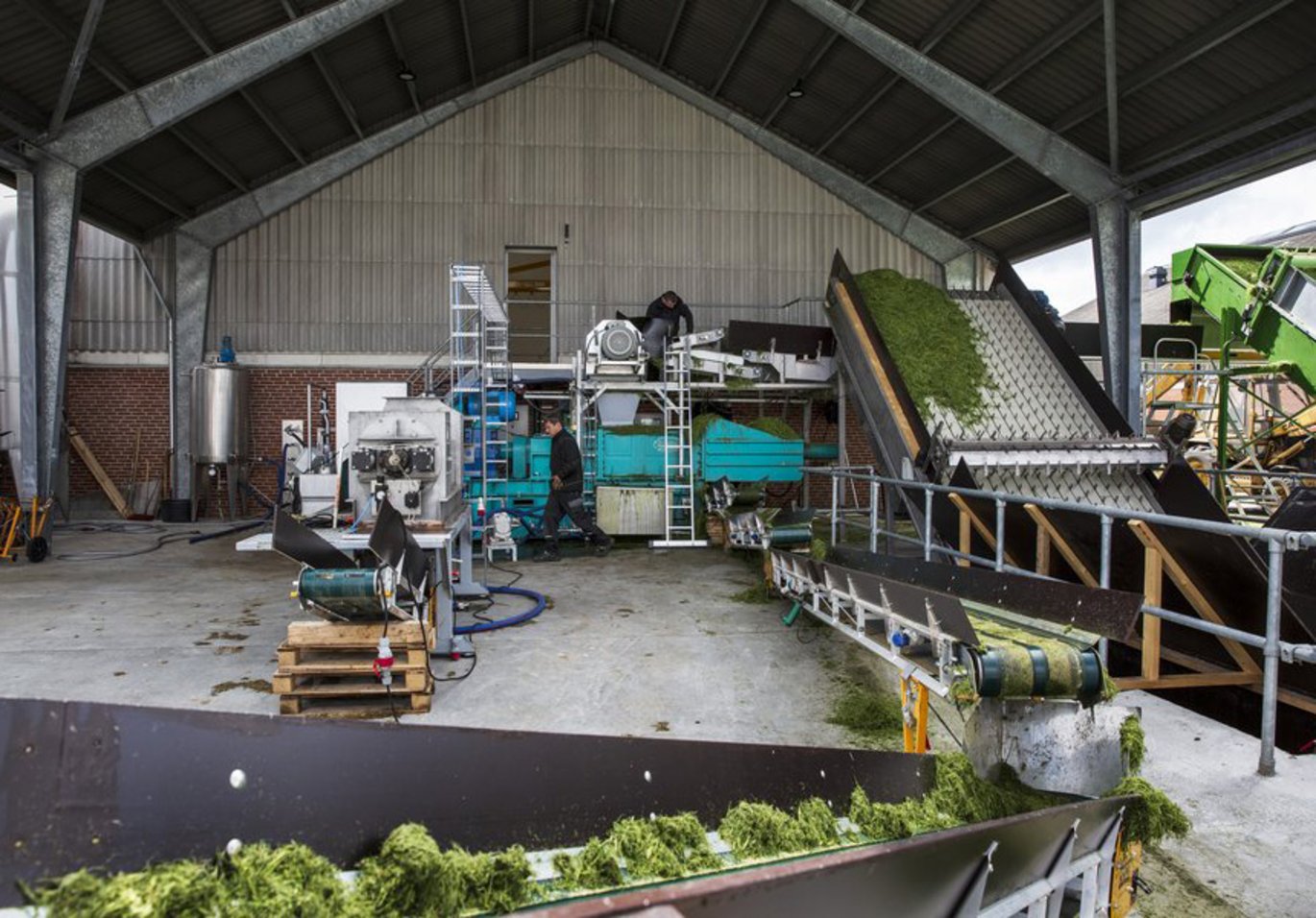More grassland to improve climate and environment
Grassland areas may reduce agricultural emissions of greenhouse gases and nutrients. Together with newly developed biorefining technologies, grasslands constitute a breeding ground for new sustainable products, e.g. green protein to replace the use of imported soya. A new research project will make it possible to harvest the benefits.

When you grow perennial grass fields, carbon stocks are stored in the soil, and the CO2 stored in the soil will not impact the atmosphere. Cultivation of grass does not require pesticides, and compared to annual crops the nitrate leaching from perennial grass fields is much lower.
- Increased cultivation of grass and clover will thus contribute to fulfilling both climate goals and the EU Water Framework Directive, says Senior Researcher Uffe Jørgensen, the Aarhus University Centre for Circular Bioeconomy (CBIO).
At the same time, Uffe Jørgensen points out that research and development of new biorefining technologies will allow the use of grass for various purposes. For instance, it is possible to extract protein and other high-value products from grass, while residual products may be used for e.g. feed and renewable energy.
- This will allow us to produce sustainable protein instead of importing it from other parts of the world. However, more factors prevent us from harvesting all the benefits at the moment, says Uffe Jørgensen.
We lack e.g. tools to document the long-term effects of grass cultivation. Authorities as well as food companies point out that solid research documentation is necessary if we are to calculate the effect of grass and clover on soil carbon contents.
As no official credit systems exist yet, today’s farmers are not credited for growing climate-friendly crops. Among other reasons, this is due to the fact that it is difficult to determine the effect as it depends on the type of grassland, fertilization, duration of crop cultivation and the way in which the grassland is converted to subsequent crop cultivation.
A new research project ”GrassTools” will try to improve this. Within the framework of the project, new tools will be developed that will make it possible to document and utilize the grassland potential.
One of the new tools to be developed in the GrassTools project, is a simple and very precise method (based on the so-called qPCR technology) to measure the amount of roots in different varieties of grass and clover. This new tool will help to identify the roots of any given variety, and thus also its potential for CO2 storing.
This information – together with information on e.g. crops, soil type, fertilizer etc. – will be analyzed by means of mathematical models that are also to be developed in the project. The models will determine the total effect of grass cultivation on the aquatic environment and climate, and thus form the basis for the certification of the impact.
Another tool to be developed within the framework of the project, are applications for Yara’s N-sensor in grassland. Correct fertilization of a grass field depends on e.g. soil type and the species composition of the crop. The N-sensor calibration will be developed in order to consider these factors.
Partners from the agricultural sector, the industry, authorities and the research participate in GrassTools. A major goal will be the discussion of how to quantify and document the positive effects of grasslands in order for these to be part of a future optimization of the climate and environmental efforts of agriculture.
Methods for a well-documented quantification of organic carbon are essential for the possible handling of climate credits.
Contact
Uffe Jørgensen, Senior Researcher at Department of Agroecology and Head of CBIO – Aarhus University Centre for Circular Bioeconomy
E-mail: uffe.jorgensen@agro.au.dk. Mobile: +45 21337831
Jens Bomholt, Head of Press and Media service, Innovation Fund Denmark
Tel.: 61 90 50 45, E-mail: jens.bomholt@innofond.dk
Facts
Innovation Fund Denmark investment: 19,357,607 DKK
Total budget: 26,461,802 DKK
Duration: 5 years
Officiel titel: GrassTools – Tools for improving grassland biomass production and delivering multiple ecosystem services
Partners:
· Aarhus University, Department of Agroecology (coordinator)
· DSV Frø
· Yara GmbH & Co. KG
· Arla Foods amba
· Danish Crown
· Farmers Union, Fjordland
· Skive Municipality
· The Ministry of Food, Agriculture and Fisheries of Denmark
